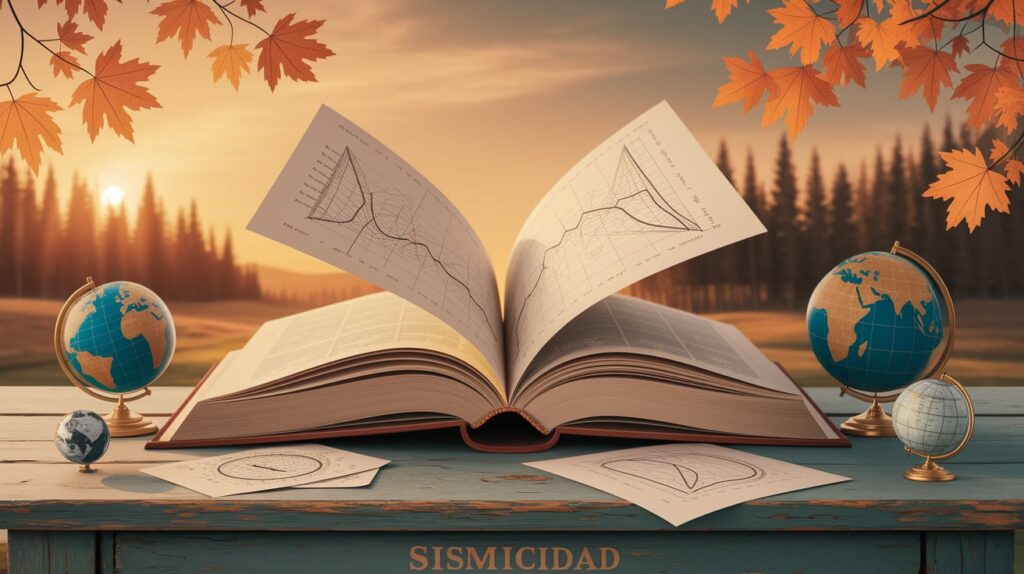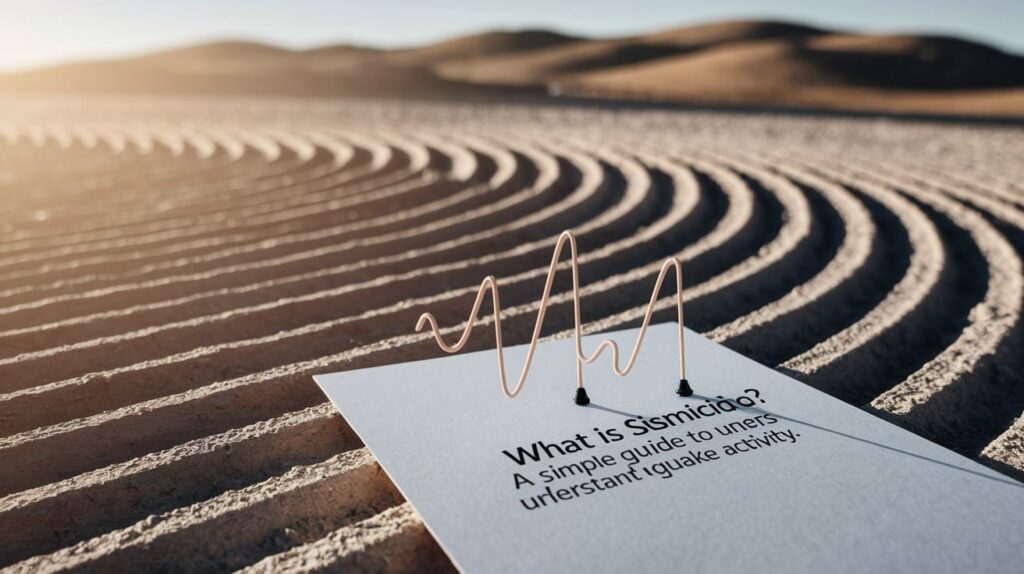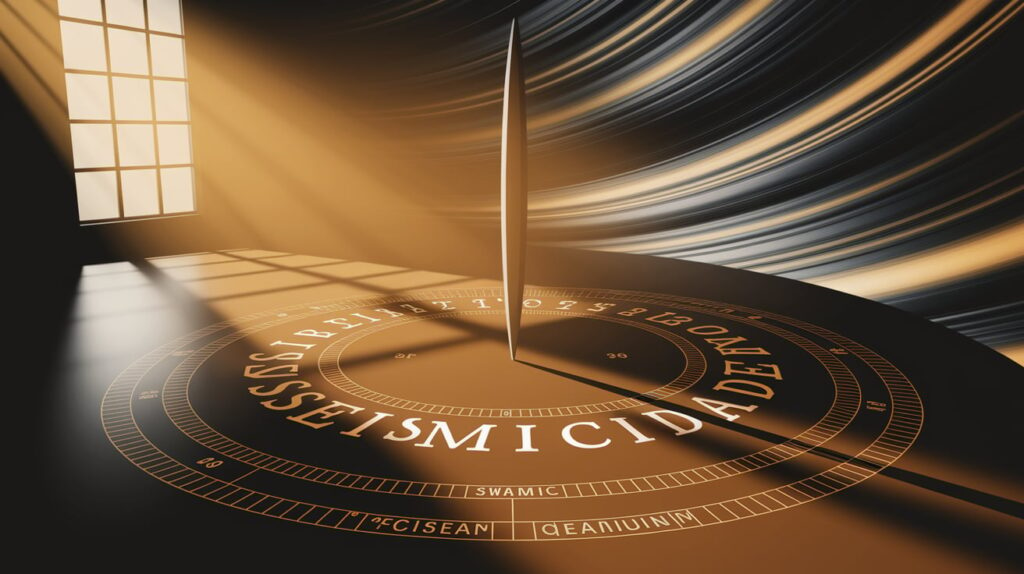Sismicidad means the way earthquakes happen in a place. It tells us how often earthquakes happen, how strong they are, and how deep they go under the ground. If you have ever felt the ground shake, that is because of an earthquake—and sismicidad helps people understand those shakes better. This is super important for scientists and for people who live in places where earthquakes happen a lot. When we learn about sismicidad, we can plan better, build stronger buildings, and stay safe. This guide is here to explain everything in a fun and easy way. No hard words—just the basics to help you know what sismicidad really means!
Imagine the Earth like a giant puzzle made of big pieces called plates. Sometimes these plates move and bump into each other. When they do, they can cause the ground to shake—that’s an earthquake! Now, sismicidad is like a big report card that tells us how often these shakes happen, where they happen, and how big or small they are. Scientists look at many earthquakes over time and use tools to measure them. They divide the Earth into parts and check how much shaking happened in each part. This helps them understand which places are safe and which places might have more earthquakes in the future. By studying sismicidad, people can prepare better and know what to do when the ground shakes. It’s like learning about the weather, but instead of rain or sun, we learn about how the Earth moves!
What Does Sismicidad Mean and Why Should You Care
Sismicidad means the number of earthquakes and how strong they are in one place. It shows us where the Earth shakes the most. If you live in a country with lots of earthquakes, it is very helpful to know about sismicidad. It can help you stay safe and ready. Scientists use this word to explain earthquake activity in easy ways. It’s like checking the Earth’s heartbeat! If we don’t understand sismicidad, we might not know how dangerous some places are. Learning about it is smart and super helpful. Even if earthquakes are scary, we can be ready for them. So yes, you should care about sismicidad—because it helps protect you, your family, and your home.
How Scientists Measure Sismicidad (In Easy Words)

Scientists look at earthquake data to study sismicidad. They count how many earthquakes happen, how big they are, and how deep they shake the ground. They also look at where the earthquakes happen. They use maps and tools to collect this information. These tools are like big ears that listen to the Earth! Scientists put all the data together and study it over time. Then, they can say if a place has high or low sismicidad. They even use math formulas, but don’t worry—it’s their job! We just need to know what they find. This helps people plan buildings and schools to be stronger. Thanks to science, we know where it shakes a lot—and we can stay safer.
What Causes Sismicidad: Let’s Make It Simple
Sismicidad happens because the Earth’s crust is made of big puzzle pieces called tectonic plates. These plates are always moving, even if we don’t feel it. Sometimes, they bump, slide, or pull apart. When this happens, energy builds up and BOOM—an earthquake! That’s what causes sismicidad. It’s like when you stretch a rubber band and let it go—it snaps! The Earth does that too. Sometimes the earthquakes are small, and sometimes they are big. If a place has lots of plate movement, it has more sismicidad. Volcanoes and faults can also cause earthquakes. So remember: Earth is always moving, and when it moves a lot, we get sismicidad. It’s not magic—it’s just nature doing its thing.
Where on Earth Does Sismicidad Happen the Most
Places near the edges of tectonic plates have more sismicidad. Countries like Japan, Chile, Indonesia, and Mexico have a lot of earthquakes. These places are in the “Ring of Fire,” a big circle around the Pacific Ocean where the Earth shakes a lot. The United States, especially California and Alaska, also has high sismicidad. Some places in Europe and Asia have it too. Even if your country does not feel many earthquakes, it’s good to know if it’s close to a fault line. Scientists make maps that show high and low sismicidad areas. If you live in a red or orange zone, that means your area has more shaking. It’s smart to check your country’s risk and be prepared.
Can We Predict Earthquakes Through Sismicidad
Right now, we cannot predict the exact time an earthquake will happen. But sismicidad helps us know which places are more likely to have earthquakes. Scientists look at earthquake patterns from the past to guess what might happen in the future. It’s like looking at the weather to see if it might rain. If one place has had many earthquakes, it may have more again. This helps people get ready and make smart choices. So, while we can’t say “an earthquake will come tomorrow,” we can say “this place is risky.” That’s why sismicidad is super helpful. It gives us clues and helps us plan for the future—because being ready is better than being surprised.
The History Behind the Word Sismicidad

The word sismicidad comes from the Spanish word “sismo,” which means earthquake. Scientists started using it around 1941. Two smart men—Beno Gutenberg and Charles Francis Richter—helped explain how to measure earthquakes. They gave us tools to understand how often and how strong earthquakes are. That’s where sismicidad came from. It became a way to talk about earthquake patterns in one word. Before that, people only talked about single earthquakes. Now, we can look at the big picture with this word. It helps scientists, builders, and even teachers. So, sismicidad is not just a science word—it’s a tool for everyone. Knowing where the word comes from helps us understand why it matters today.
How Sismicidad Helps Keep Us Safe
Knowing about sismicidad helps people stay safe. If a place has high sismicidad, builders make stronger buildings that don’t fall down easily. Schools and hospitals can be built better to protect people inside. People also learn safety plans like “drop, cover, and hold on.” Governments can use sismicidad to make rules for safer cities. If we know where earthquakes happen often, we can avoid building important things there. It also helps in planning roads, bridges, and emergency systems. So yes, sismicidad is more than just a science word—it helps save lives. It’s like a superhero for safety! That’s why learning about it is good for everyone, even kids.
Fun Facts About Earthquakes and Sismicidad
Did you know Earth has hundreds of earthquakes every day? Most are so small we can’t feel them! Some animals, like dogs and cats, feel them before we do. Earthquakes can even move mountains and change the land. There is a place in the ocean where two plates meet and cause earthquakes almost every day. It’s wild! Also, Japan has warning systems that beep before big earthquakes come. That’s using sismicidad in action! Earthquakes can even happen on the Moon, and they’re called “moonquakes.” Isn’t that cool? So, sismicidad is not just serious—it’s also full of surprising facts. Nature is amazing, and the more we learn, the more we understand the world we live in.
Is My Country High in Sismicidad: Let’s Find Out
You can find out if your country has high sismicidad by checking maps online. These maps show where earthquakes happen the most. Look for colors like red, orange, or yellow—these mean higher risk. If your country is near a tectonic plate edge, it probably has more sismicidad. Countries like Japan, Mexico, and Turkey are well-known for shaking. But even if you live in a quiet place, it’s still good to learn about earthquakes. Talk to your teachers or check your city’s safety website. Being ready is always smart. So, yes—ask questions, look at maps, and learn about your area’s sismicidad. It’s your Earth too, and it’s awesome to know how it works!
Easy Tips to Stay Safe in High Sismicidad Areas

If you live in a place with high sismicidad, don’t worry—just be ready! Always know a safe spot in your home like under a table or next to a strong wall. Practice earthquake drills with your family, so everyone knows what to do. Keep a safety kit with water, snacks, a flashlight, and a small first aid box. Put heavy things on low shelves so they don’t fall. Don’t run outside during an earthquake—just “drop, cover, and hold on!” Talk to your school about safety plans. And most of all, stay calm. Knowing what to do makes you strong and smart. Sismicidad can be scary, but with a little planning, you’ll feel safer and more ready.
Conclusion
Sismicidad is just a fancy word to talk about earthquakes, but it helps us understand our world better. When we know where the Earth shakes the most, we can be more careful. We can build stronger homes and teach kids how to stay safe. Even if we can’t stop earthquakes, we can be ready for them.
So don’t be afraid of the word sismicidad! It’s not just for scientists—it’s for all of us. Learn, prepare, and help others stay safe too. The Earth is amazing, and when we understand it more, we take better care of ourselves and each other.
FAQs
Q: What is sismicidad?
A: It means how often and how strong earthquakes happen in a place.
Q: Can sismicidad tell us when an earthquake will come?
A: No, but it helps us know which places are more likely to shake.
Q: Who uses sismicidad?
A: Scientists, builders, teachers, and safety planners use it.
Q: Is my city safe if it has low sismicidad?
A: Yes, but it’s still smart to be ready just in case.
Q: How do I prepare for earthquakes in high sismicidad places?
A: Know safe spots, have a kit, and practice drills with your family.
